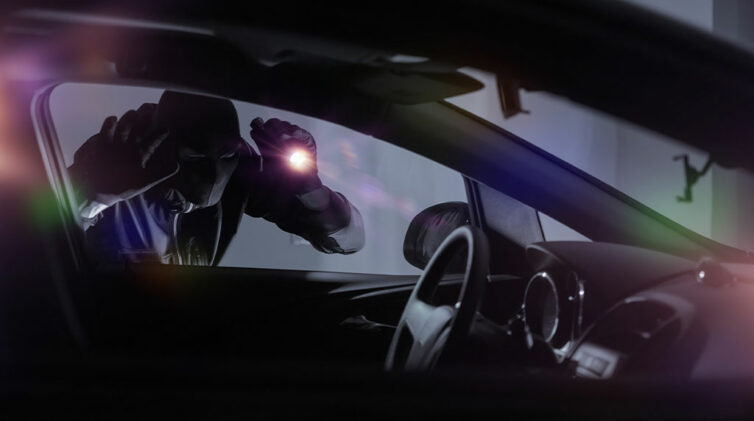Global Electric Transport (GET), based in Melbourne and with major shareholders including Srecko Lorbek of Lorbek Luxury Cars, has developed a payment app that it claims completely mitigates the need for a rudimentary logbook method of collecting a distance-based tax.
The taxation of EVs has been proposed by some governments and the Victorian independent advisory body Infrastructure Victoria as a road-user charge and the main proposal is to use logbooks as the tax register.
GET CEO Harry Hamann told GoAutoNews Premium that a logbook method “was not a fair way to calculate a road-user charge” and that GET’s proposal was to apply the tax when the EV motorist recharged.
“People say electric cars, and hydrogen and all the other technology, is completely new so as a result, we have to completely rethink everything associated with cars,” he said.
“But the reality is, there is no difference between electric car, hydrogen car, and petrol or diesel car apart from the method by which it’s propelled.
“And the nature in which we use our cars is not fundamentally changed.
“So our logic was, well, they introduced a fuel excise levy nearly 100 years or so ago. It hasn’t materially changed in that time. Why? Because it’s efficient. And it works.”
Mr Hamann said an electricity charge-based tax is a much simpler and fairer method of collecting revenue from EV owners and has many similarities with the federal fuel excise system.
“The problem with going down a distance-based model is it’s going to require everyone to submit, manually or automatically, the odometer reading,” he said.
“And they’re going to get sent a bill. For most people, if they get a bill for $300, that’s a significant amount of money.
“On the other hand, under a consumption tax as in the case of refuelling a car with petrol, you go to the petrol station, fill up your car, pay your portion of tax, and drive away.
“Plus, you don’t get a separate line item on your receipt saying your fuel excise portion is 40 per cent of what you’re paying. It just disappears into the total amount paid for your fuel (electricity) and, as a result, you don’t see that cost.
“A distance-based model also results in rural and regional road users to pay a proportionally higher amount of tax, given the higher kilometres they travel and the lower, per kilometre fuel/energy consumption they use as opposed to stop-start city drivers.
“For government, it is important to remember that when the petrol prices are sky high, consumers don’t blame the government, even though they are taking the lion’s share of what the consumer is paying, instead they blame the petrol station and the fuel company, because it isn’t shown what is going to the government’s coffers on their receipt.

“So having a consumption tax built into the charge for the petrol – or the charging of the EV – is actually a benefit to the government.”
The GET system works because every EV charger calculates how much energy is used.
From that, the tax payable to the government – whatever that sum will be based on a kilowatt per hour rate – is calculated and collected there and then.
“For people with a charger at home, as each house is transitioning to a smart meter, we can individually monitor the consumption of domestic EV chargers. Any qualified electrician will, as a matter of good practice and to be compliant, put an EV charger on its own breaker on the main switchboard, thus allowing it to be individually monitored on the smart meter.”
Mr Hamann said an electricity levy can be collected by the energy retailers who can then distribute the funds to the government.
He said he envisages that the consumption tax system for EV charging would create an industry for businesses like GET “and about two or three other sort of big players already in this space”.
He said it would be an efficient process that would give the government a return “in the high 80s” cents retained in the dollar of tax collected, which would be impossible for a distance based levy.
“That’s a high return, more or less equivalent to the efficiency of GST,” he said.
“Most other collection systems are around 60 cents in the dollar because of huge amounts of money lost in administration and fraud.”
He said that GET is now talking to the Victorian Treasury and has sent a submission to federal treasurer Josh Frydenberg.
“It would make much more sense to have one national tax on EVs rather than eight distinct jurisdictional charges,” he said.
“Having different charges and rates in the different states and territories carries with it eight different layers of bureaucracy, oversight and red tape – it just makes sense for the federal Government to step in, like they did with income tax after World War II.
“If it does go the route of having multiple jurisdictional taxes, the beauty of the GET system is that it can seamlessly operate across jurisdictions.
“So if you live on the border in Victoria, and you’re getting charged at a certain rate, and you fill up in South Australia, the system can recognise the differences.”
Mr Hamann said though talks had started with governments, GET had not strongly pursued discussions with energy providers and with the various electric vehicle councils and organisations.
By Neil Dowling












 Read More: Related articles
Read More: Related articles

